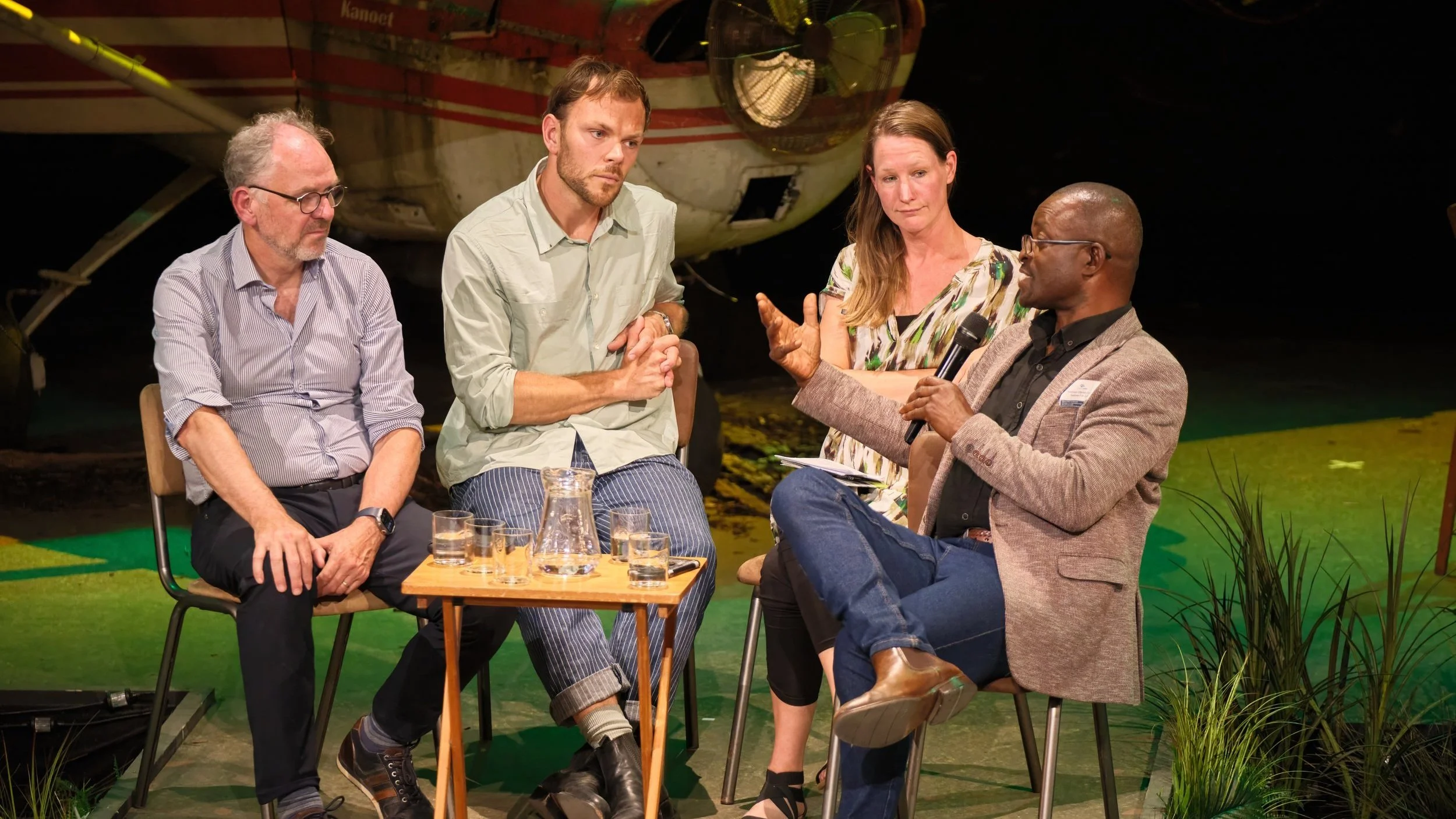From Ego to Eco: Reimagining Collaboration in Conservation
Insights from the “Co-creating the Future” Panel at the Nature FIRST Final Conference
At a time when conservation challenges are growing more urgent and organisations often find themselves competing for the same resources, the Nature FIRST Final Conference opened up a much-needed conversation: how can we move from fragmented efforts to shared impact?
The panel discussion “Co-creating the Future – Partnership for Biodiversity Preservation”, held on 25 June 2025 at Ouwehands Dierenpark in Rhenen, brought together voices from diverse corners of the conservation world. Panelists included Laurens Gomes (Metabolic), Thirza Loffeld (WildHub), Mike Odenhoven (Sumthing), Martin Spitholt (SSF), and Michael O’Brien-Onyeka (Nature4Justice). The session was moderated by Sonja van Meerbeek (SSF).
Starting with the Big Picture
The discussion began with a video statement by Laurens Gomes, who challenged the conservation sector to think beyond scaling individual solutions. Too often, he said, initiatives are built in small circles of like-minded partners, with impact considered only afterwards. The projects that succeed in creating lasting change are those that begin with a broader systems perspective. Laurens introduced the concept of “weaving” – connecting strengths across sectors and disciplines, and shifting from ownership to shared responsibility.
Trust as the Foundation
Thirza Loffeld, co-founder of WildHub, highlighted the human dynamics behind collaboration. With over 6,000 members in 160 countries, WildHub has become a space where professionals share challenges, exchange knowledge, and support one another. According to Thirza, meaningful collaboration begins with psychological safety. People need to feel recognised, supported and able to share openly without fear of being judged or overlooked.
Through initiatives like the Catalyst programme, WildHub creates opportunities for early-career professionals to co-create content with mentors and experts. This not only builds confidence but ensures that diverse voices shape the conservation agenda.
Making Impact Visible with Technology
Mike Odenhoven, CEO of Sumthing, brought a technology lens to the conversation. His platform helps conservation projects share their work in a more transparent and engaging way. Rather than a generic thank-you note, donors can now see actual results through photos, videos, or satellite data.
Technology also plays a role in building stronger coalitions. Mike pointed out that many small initiatives cannot integrate with large-scale funders or platforms on their own. But when organisations use shared tools and tell a collective story, it becomes easier to attract long-term support.
Changing the Power Dynamic
Michael O’Brien-Onyeka, a long-time NGO leader and current Executive Vice President at Nature4Justice, spoke frankly about power imbalances. While most biodiversity is located in the Global South, much of the funding and influence still come from the Global North. He called on donors and organisations to stop treating partnerships as symbolic and instead design them to build lasting capacity.
Michael shared practical examples from his work at Conservation International, where the strategy shifted from organisational growth to local empowerment. Over a few years, they redirected funding and leadership to national organisations across Africa, making it possible to access and deliver larger, more ambitious projects.
Rethinking Data Use
Martin Spitholt emphasised the need for data collaboration. Many organisations continue to work in isolation, collecting data that is rarely shared or reused. He drew a comparison to the Dutch healthcare system, where different IT platforms now exchange data efficiently through common standards. Martin encouraged conservation groups to adopt similar models – sharing data without needing to standardise everything into a single platform.
A Shift in Mindset
The panellists agreed that collaboration is not a quick fix. It takes time to build trust, establish shared systems and develop a common understanding of success. But the payoff is significant. By focusing on partnerships rather than competition, organisations can access more funding, achieve broader impact and avoid duplicating efforts.
Key takeaways included:
Start from a systems perspective, not just a project goal.
Build trust and psychological safety before expecting collaboration.
Use technology to increase transparency and connect stakeholders.
Invest in capacity, especially in under-resourced regions.
Create open, modular systems for data and knowledge sharing.
Redefine success to include the growth of partners, not just your own organisation.
The session closed with a reminder that collaboration begins with intent. It is not only about what we achieve together, but how we choose to work together. In the words of one panellist: to co-create the future of conservation, we need to move from ego to eco.



